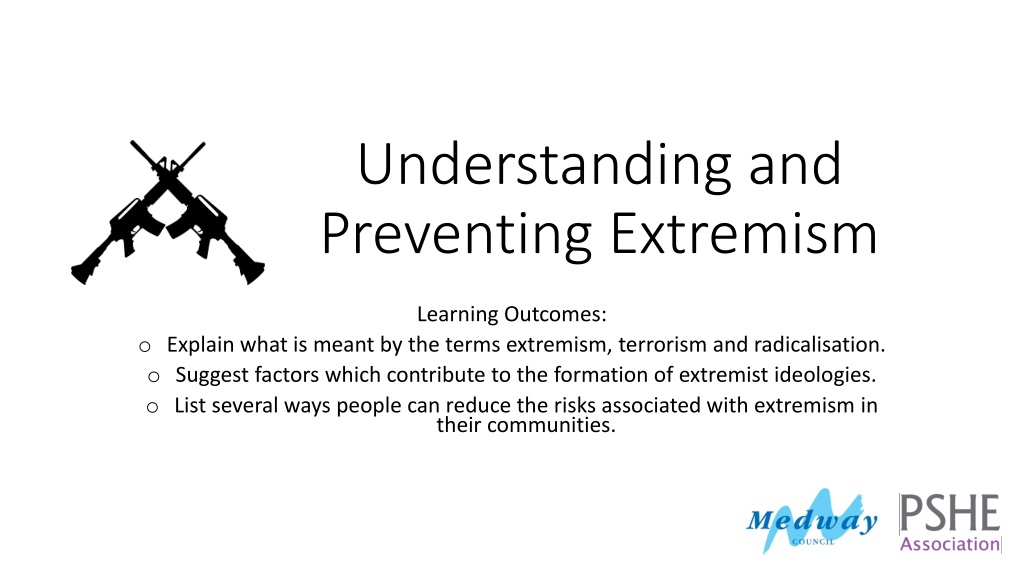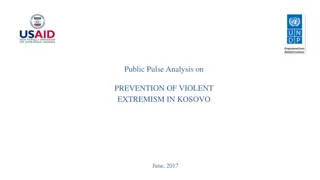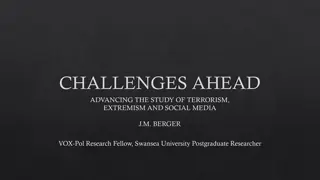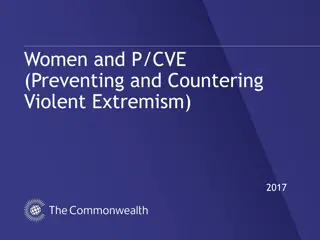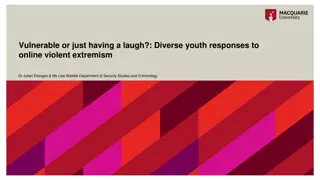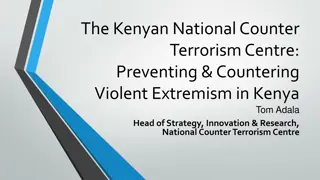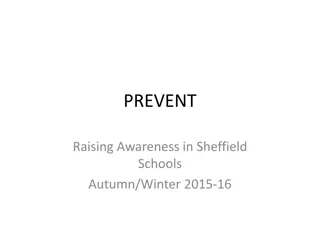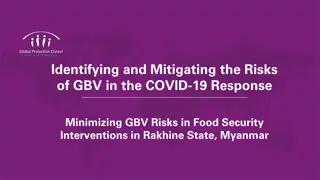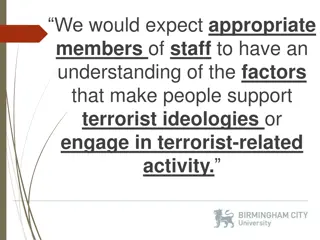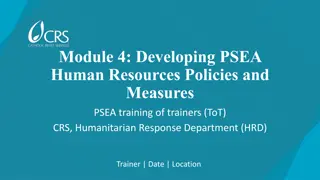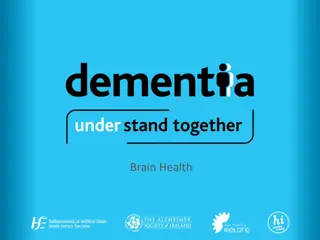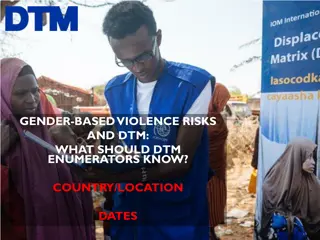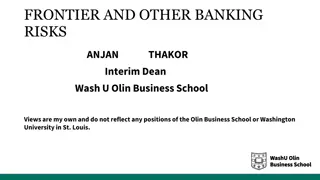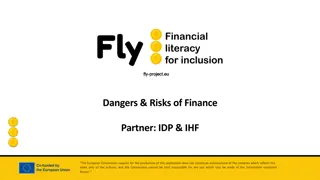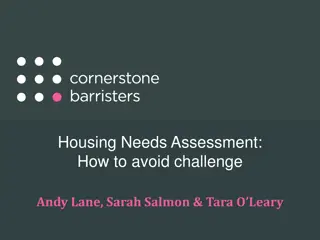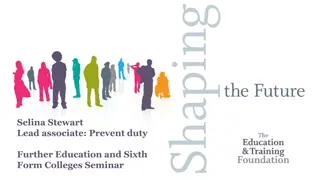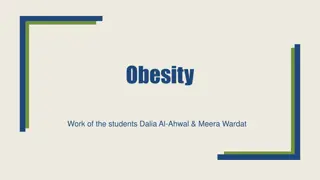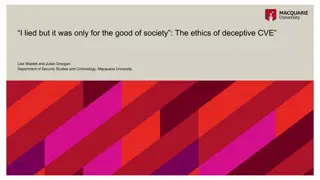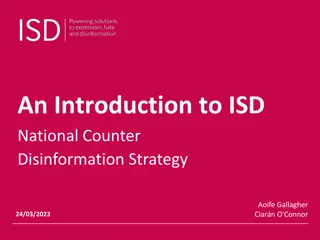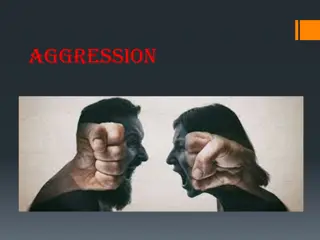Understanding and Preventing Extremism: Factors, Risks, and Solutions
Explore the definitions of extremism and terrorism, factors contributing to extremist ideologies, ways to reduce risks associated with extremism, and key concepts to understand and prevent radicalization. Delve into the root causes of extremist activities, such as lack of identity, influence from violent groups, and societal injustices, to enhance awareness and promote strategies for prevention.
Download Presentation

Please find below an Image/Link to download the presentation.
The content on the website is provided AS IS for your information and personal use only. It may not be sold, licensed, or shared on other websites without obtaining consent from the author. Download presentation by click this link. If you encounter any issues during the download, it is possible that the publisher has removed the file from their server.
E N D
Presentation Transcript
Understanding and Preventing Extremism Learning Outcomes: o Explain what is meant by the terms extremism, terrorism and radicalisation. o Suggest factors which contribute to the formation of extremist ideologies. o List several ways people can reduce the risks associated with extremism in their communities.
Ground rules Come up with 5 rules which your table thinks will help the class to have positive, informative discussions and debates on this topic.
Key Concepts Work on your own to fill in your handout by covering the following: explain what you understand by the terms extremism and terrorism. suggest possible causes of extremism and terrorism. add ideas on possible solutions to tackle terrorism.
Definitions What were your definitions of extremism and terrorism? Extremism: holding extreme political or religious views. Terrorism: the unlawful use of violence and intimidation to bring about political or social change.
Key Questions Are extremism and terrorism the same thing? What types of extremist groups are there? What do you understand by the word radicalisation ?
FBI Wanted Poster Read the Wanted poster and look for clues about what can lead a person to be involved in extremist activities.
What factors or feelings might lead people to get involved in terrorism or violent extremism? A lack of identity, purpose or sense of belonging Demonising of others as different, leaving people feeling separate and/or insecure Defending their culture, way of life or beliefs Sense of injustice regarding the treatment of their culture or beliefs Pressure or influence from violent extremist groups, including through social media Dehumanisation indifference to violence through violent games, radicalisation process dehumanising others Lack of understanding of faith Lack of critical assessment of information Poverty, unemployment, lack of education and the promise of a better life
What can communities do to help reduce these factors? Use a different colour pen to annotate your group s list to add ways people can reduce the impact of such factors. Eg next to lack of understanding of faith you might add RE lessons in schools . How many of your ideas could you do yourselves, e.g. could you help people feel included, ensure you report online discrimination etc?
Malala Yousafzai Youth Activist Malala Yousafzai is an activist for female education. She was attacked by the Taliban (religious extremists). She is quoted as saying: The extremists are afraid of books and pens. The power of education frightens them. Why do you think Malala says extremists are frightened by education? To what extent do you agree? Why?
Reflection Revisit your key concepts sheet. Add any extra ideas IN A DIFFERENT COLOUR and amend anything you no longer agree with. What have you learned about your role in helping the community?
Questions? Do you have any questions on this topic? Is there anything that you would like to comment on? Or that worries you? Add a question to the question box if you do. Otherwise, just post your blank slip of paper into the box.
Signposting If you want to talk to someone about today s lesson: Tutor Head of year Childline: 0800 1111 www.childline.org.uk Police: 101 Report online content: https://www.gov.uk/report-terrorism
